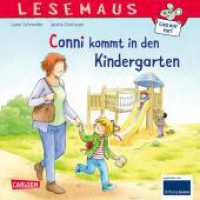- ホーム
- > 洋書
- > ドイツ書
- > Humanities, Arts & Music
- > Psychology
- > practical psychology
Full Description
This book explores the concept of resilience and its significance in responding to a rapid and ever-changing globalised world whilst critiquing its 'buzzword' status in contemporary times.
Drawing on research from a range of educational settings, the book demonstrates that the resilience of individuals and their surrounding systems should not be viewed in isolation and that the interplay between individual resilience, community resilience and resilient societies is complex and symbiotic. On this basis, it illustrates that efforts to promote resilience would benefit from a systems approach capable of coping with this complexity.
Using the ideas of agency and the power of self-determinism, a development of Bronfenbrenner's bio-ecological model is presented to illustrate the complexity of their interplay. Existing models of resilience are developed with the book offering the Dynamic Interactive Model of Resilience (DIMoR) as a way to analyse and support resilience which moves beyond a reductionist, descriptive and 'fashionable' presentation of resilience.
Contents
Part I Resilience: Building a model.- Chapter 1. A Need for Resilience.- Chapter 2. Towards a dynamic interactive model of resilience.- Chapter 3. Resilience and Society.- Chapter 4. Resilience in Education: Hindrance and Opportunity.- Chapter 5. 'Teaching' Resilience: Systems, pedagogies and programmes.- Part II: Exploring Resilience in Educational: Practice.- Chapter 6. Resilience in the Early Years.- Chapter 7. Resilience, well-being and mental health: The role of education settings.- Chapter 8. Resilience in Practitioners working in the field of SEND.- Chapter 9. Using Assessment Feedback to Develop Resilience.- Chapter 10. Educator Conceptualisations of Emotional Education and Resilience.- Chapter 11. Young Offenders and the Complexity of Re-engaging them with Education.- Chapter 12. Developing an emergent resilience through Self-Organised Learning Environments.- Part III: Looking forwards.- Chapter 13. A Rounder Sense of Purpose: educator competences for sustainability andresilience.- Chapter 14. Conclusion.








